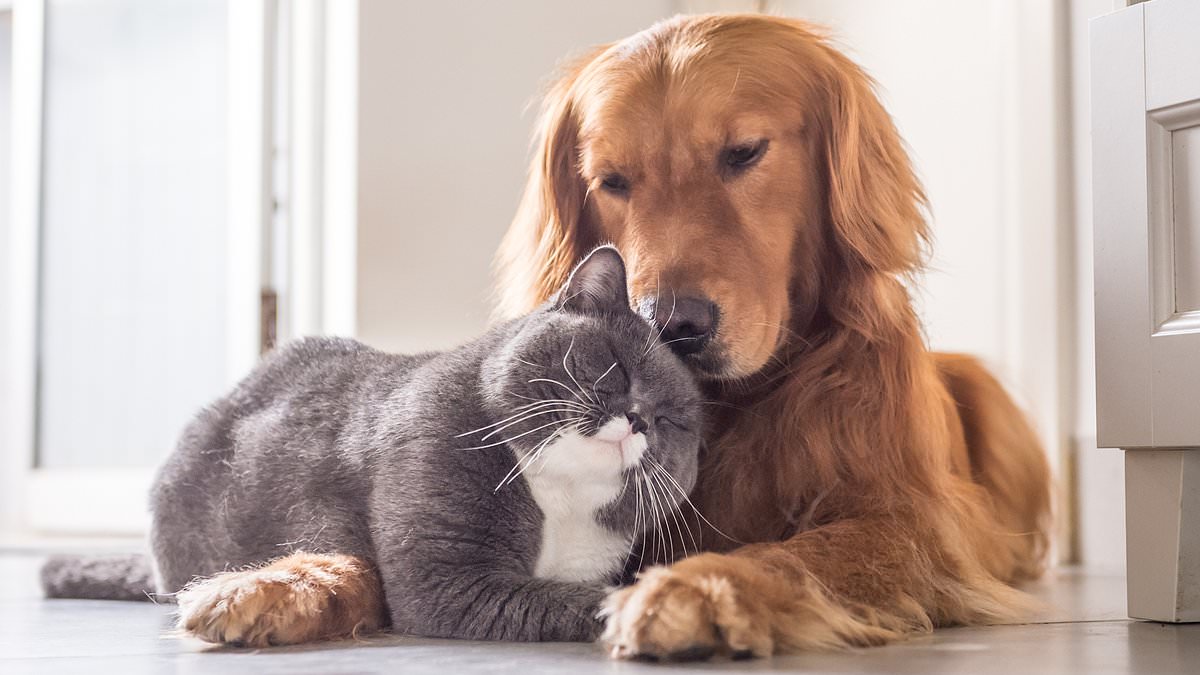Cats needs to be saved indoors and canine on a leash — if you wish to shield them from chook flu, European well being chiefs have warned.
The worldwide chook flu outbreak has devastated each home and wild chook populations inflicting thousands and thousands of deaths in 67 international locations, together with within the UK.
Scientists have additionally raised the alarm about chook flu deaths amongst wild mammals, like foxes, which may catch the virus by searching sickened birds or scavenging the useless.
Now the European Meals Security Authority (EFSA) has urged pet homeowners to maintain their cats indoors and canine leashed whereas strolling to keep away from the identical dangers.
The warning was sparked by a wave of cats in Poland testing optimistic for chook flu in June, with 9 dying because of this.
Maintain your fury associates locked up or on a leash to guard them from chook flu, European well being chiefs have warned
This map reveals the entire identified incidences of non-human mammals being contaminated with chook flu since 2016. Stars point out occasions that resulted in deaths from the virus
Whereas the supply of the outbreak has but to be confirmed, European well being chiefs famous about half of the cats had been given uncooked poultry to eat by their homeowners, which might have handed the virus to the felines.
No cat-to-cat or cat-to-human chook flu transmission has but been confirmed within the circumstances, the officers added.
One other examine, this time from a chook flu-infected farm in Italy, additionally discovered 5 canine and a cat there had antibodies for the illness.
EFSA mentioned: ‘It is strongly recommended to keep away from publicity of home cats and canine, and normally carnivore pets, to useless or diseased animals (mammals and birds), and to keep away from feeding home cats and canine offal and uncooked meat from wild or saved birds.’
It added: ‘Attainable measures are retaining canine on a leash, and confining cats indoors in areas the place in depth circulation of HPAI (Excessive pathogenic avian influenza H5N1) viruses in wild birds has been confirmed.’
Genetic evaluation of each the Polish and Italian outbreaks confirmed the extremely infectious chook flu pressure spreading around the world, dubbed HPAI A(H5N1), was accountable.
A Nationwide Belief ranger clears useless birds from Staple Island, Northumberland, throughout a chook flu outbreak in July final yr
UK scientists tasked with growing ‘eventualities of early human transmission’ of chook flu have warned that 5 per cent of contaminated folks might die if the virus took off in people (proven beneath situation three). Below one other situation, the scientists assumed 1 per cent of these contaminated can be hospitalised and 0.25 per cent would die — just like how lethal Covid was in autumn 2021 (situation one). The opposite noticed a demise charge of two.5 per cent (situation two)
Your browser doesn’t assist iframes.
Well being chiefs mentioned might this point out the virus is adapting to higher infect mammals.
This, EFSA added that this not solely had implications for wildlife however for home animals, and by extension their homeowners.
‘HPAI A(H5N1) virus-infected pets might develop into a possible danger for publicity of additional animals and pet homeowners,’ they mentioned.
EFSA additionally really helpful additional well being monitoring of home pets in areas with a excessive variety of chook flu circumstances and for chook flu testing of pet homeowners uncovered to contaminated cats and canine.
Individuals within the UK have been suggested to keep away from dealing with useless or sick wild birds and washing their fingers completely if they need to to scale back their danger of catching the illness.
No official steering or recommendation concerning cat or canine interactions with wild birds just like EFSA’s suggestions has been issued in Britain.
UK well being authorities have maintained that the general danger posed to people by avian influenza stays low.
Nonetheless, scientists worry if chook flu ever makes the leap to people it might kill as much as one in 20 of these contaminated, in line with modelling by UK specialists.
